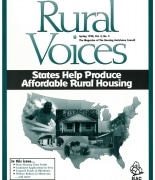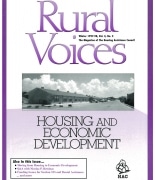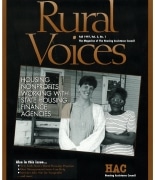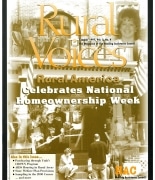The Spring 1998 issue of Rural Voices examines some of the ways states have become involved. Any one of these methods could be duplicated in states that have not yet tried them.
State funds, and state agencies administering federal funds, are essential in developing affordable rural housing This issue of Rural Voices examines some of the ways states have become involved. Any one of these methods could be duplicated in states that have not yet tried them. First, an expert on housing trust funds explains how states have used those dedicated revenue sources to improve rural housing conditions. Other articles describe efforts in Iowa and Oklahoma to make state-administered .fimds more available in rural areas. Iowa has designed a collaborative application process, now being adopted by other states as well. Oklahoma analyzed housing needs in fast-growing rural parts of the state and targeted funds to help meet those needs.
Continuing Rural Voices’ coverage of welfare reform, this issue also includes an article describing welfare reform in Minnesota, starting with a pilot program initiated by the state before changes were adopted at the federal level. The magazine’s View from Washington department examines the possibility of enacting housing legislation during 1998 before Congress adjourns for elections in the fall. As always, the HAC Facts department summarizes some of the Housing Assistance Council’s recent activities.




